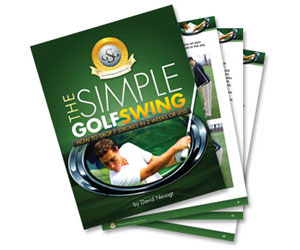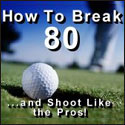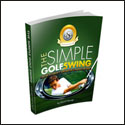Tips To Give You A Great Golf Swing
Tips To Give You A Great Golf Swing
All crack players feel that they swing from in-to-out when driving.
I have been doing this so long that it no longer feels a “guided” or unnatural swing to me.
Indeed if I feel myself making any other sort of swing I know it will result in a bad shot.
Yet with the beginner this in-to-out swing does feel unnatural and gives an impression that the ball will be pushed into the rough to the right. This feeling will of course be corrected by experience.
This disparity in feeling about shots as between the crack and the beginner must never be lost sight of in teaching.
Here we come back again to my reason for standardizing as many shots as possible so that they can all be played with the same set of “controls.” Only so I believe can you learn to play entirely by sense of feel.
Today, if I play a bad shot I do not start asking myself why I played it badly, what I did wrong, etc. questions which are liable to lead to more bad shots as we all know! I just take an easy club and try it until I get the right feel again.
Then because my shots are felt I know that the right feeling must lead to the right shot—and further, that as all my shots are made fundamentally the same, I know that if I get the right feel with say a No. 5 iron, a very easy club, I shall be making my shots with even the difficult clubs correctly and with confidence.
What usually happens is that before the back swing is completed, the player transfers his attention from the matter of making the correct swing to the matter of where he wants to hit the ball, i.e., somewhere at the top of his swing he switches from a correct in-to-out swing to one along the desired line of flight. Consequently he comes down outside the ball.
Anyone who is not a pupil of mine will admit that “you came down outside” is their tutor’s most frequent admonition. And why do I say, “who is not a pupil of mine?” Well because I never just tell them that! It is quite useless to tell a pupil he has done wrong when acting instinctively unless you tell him why he did wrong and so enable him to avoid the fault in future. That I always do.
The player who comes down outside is almost invariably thinking of where he wants to put the ball, and the only effective way of overcoming his trouble is by getting him to concentrate on the swing that experience tells him will place it there. If this is done his conscious control—his feeling for the right movements, plus a steady intention to follow will inhibit his natural desire to take disastrous short cuts.
So it is best to build up a swing which can be accepted by the mind as well as the muscles as a satisfactory means to the end desired, and then concentrating on the production of that swing. With a properly felt swing, the swing becomes the aim and the matter of where the ball will fly is left (as it should be) to take care of itself.
And finally, the good golfer feels his swing as all one piece. It is produced by a psycho-physical unison and its control is outside the mind of the player. Any control that is within the mind is subject to the state of the mind and is therefore unreliable.
Every teacher has to keep continually in mind the fact that the natural thing for any golfer to do if he thinks first of hitting the ball to the hole rather than of making the shot correctly—is to swing the club head down the desired line of flight. The urge to do this is so strong that a merely academic knowledge of where the club head ought to be felt to go cannot stand against it. William James said that where there is a conflict between the Will and the Imagination, the Imagination always wins. So no Will to make a correct swing—unless reinforced by our conscious control-can resist, when imagination of the ball flying straight for the hole supervenes.





